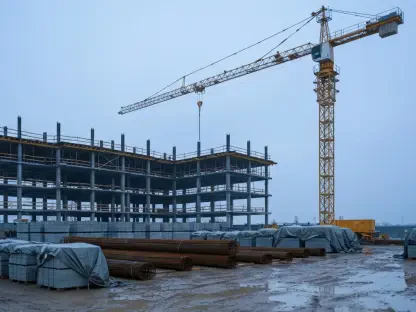Sydney’s announcement of groundbreaking planning regulations marks a historic moment as the city prepares to implement diverse eco-friendly measures. Starting January 1, 2027, the mandate dictates that all new residential buildings, large commercial structures, and tourist accommodations within its jurisdiction must align with an all-electric model. This strategic transition begins in earnest in early 2026, initially targeting residential developments and enforcing a shift from conventional gas to electric appliances. By encouraging this switch, the initiative paves the way for significant advancements in environmental conservation, economic efficiency, and public health. The promise of reduced energy costs, which are estimated to save the average household $626 annually, echoes the compelling reasoning behind adopting electric systems. Such measures aim to effectively counteract the financial and health burdens tied to the continued use of fossil fuels. This approach signals a commendable alignment with environmentally sustainable ambitions that not only address global ecological concerns but also tailor solutions to real-world economic dilemmas faced by urban residents.
Blueprint for Sustainable Urban Development
The scope of Sydney’s plan extends beyond mere energy bill reductions, promoting a sustainable, long-term vision for urban architectural transformation. At its core, the initiative reflects a concerted effort by the City of Sydney to harness the manifold benefits synonymous with electrification. This paradigm shift acknowledges the pressing need for sustainable construction practices that eschew carbon-intensive energy sources. By doing so, the city paves the way for the widespread adoption of solar power and similar renewable energy technologies, laying a robust foundation for future energy independence. Lord Mayor Clover Moore has deemed these measures indispensable, underlining the necessity of creating energy-efficient urban infrastructures. These infrastructure adaptations embrace technological progress, transforming Sydney into an exemplar of green urban innovation, even as traditional city planning grapples with ever-growing environmental challenges. Through meticulous consultations with community representatives and key industry stakeholders, Sydney’s electric building mandate represents a collaborative vision that proactively anticipates environmental shifts while driving economic growth.
The implementation of these building rules does not occur in a vacuum; it maintains harmony with existing legal frameworks that promote sustainability. One example is New South Wales’s Sustainability State Environmental Planning Policy, which aligns with the electric mandate. This existing policy lays the groundwork for larger buildings and hotels to integrate seamlessly into Sydney’s ambitious environmental goals. The all-electric requirements apply directly to substantial commercial edifices exceeding 1,000 square meters and tourist accommodations boasting over 100 rooms. However, pragmatic exceptions accommodate specific industries, with current buildings and industrial applications remaining exempt. In certain mixed-use developments where food and beverage services feature prominently, gas usage may persist provided future electrification remains a possibility. Thus, the city’s policies reflect an understanding of immediate industrial needs while steadily advancing an overarching commitment to sustainable development.
The Future of Energy-Efficient Communities
Sydney’s breakthrough planning regulations signal a monumental shift as the city gears up for diverse eco-friendly initiatives. Beginning January 1, 2027, all new residential and large commercial buildings, as well as tourist accommodations, must adopt an all-electric framework. The comprehensive transition kicks off in early 2026, primarily focusing on residential projects by replacing gas appliances with electric ones. This switch is poised to advance environmental preservation, economic efficiency, and public health significantly. The promise of reduced energy expenditures, forecasted to save households an average of $626 yearly, underscores the logic behind moving to electric systems. These directives seek to alleviate the fiscal and health issues associated with fossil fuel reliance. The plan showcases a commendable commitment to sustainable environmental goals, tackling both global ecological challenges and economic struggles faced by urban dwellers, reflecting a unique synergy between ecological responsibility and economic practicality.









